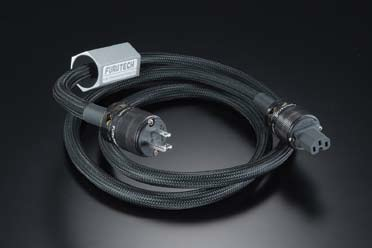
In 1988 the Japanese firm Furutech began to offer audio cables based on ultra high-purity, single-crystal copper conductors produced via the Ohno Continuous Casting (OCC) process, and ever since has enjoyed a reputation for creating products backed by science—not voodoo. Over the years, Furutech has methodically researched cable conductor and dielectric (insulation) materials, vibration-damped plugs and connectors, specialized grounding techniques, cryogenic/demagnetization treatments, and EMI filtering as they relate to sound quality. Plainly, the firm has an intriguing technology story to tell, but have its many advanced technologies led to cables and power distribution products that actually make systems sound better? To answer that question, we decided to survey a range of Furutech’s “Pure Transmission” components.

I began by equipping my system first with Furutech’s top-tier Reference III Series cables and then with its mid-tier Evolution Series cables, and comparing results. Although structural differences between the cable families are significant, I found they shared a common sound—a sound that conveys very high levels of transparency and tonal purity, as well as potent and deeply extended bass, yet does so without any discernible adverse side effects. That last phrase is hugely significant because it means that, unlike certain aggressive-sounding “detail-über-alles” cables, Furutechs are unfailingly smooth—enough so that some listeners initially perceive them as overly subdued. But I think they’re mistaken, because in my view Furutech cables are among the rare few that can provide transparency without pain.
For example, the References did a great job with the traditional Appalachian song “Darlin’ Cory” from the late Chris Jones’ Roadhouses and Automobiles [Stockfisch, CD]—a superb recording whose rich details are not easy to get right. First, the References let me hear the fundamental warmth of Jones’ guitar properly juxtaposed against its bright, sparkling, yet coolly-inflected harmonics—harmonics many cables tend to exaggerate. Next, the Furutechs caught the traditional high lonesome sound of Siard de Jong’s mandolin, showing how it adds a touch of melancholy to an otherwise light, fanciful string of notes. Later, when de Jong switches to the fiddle, the Reference cables caught the instrument’s inimitable backcountry swagger, as de Jong plays fast-rising bowed swells that almost, but not quite, holler out at the listener. Finally, the cables simply nailed the deep, muscular, commanding sound of Grischka Zepf ’s electric bass. My point is that the Reference cables invite listeners to explore musical textures and timbres without ever generating overwrought caricatures of authentic detail.
The Reference and Evolution Series cables use high-purity copper conductors that have been given Furutech’s signature “Alpha-process” cryogenic and demagnetization conditioning treatments. The main differences between the cable families are that the Reference models provide silver-plated rhodium instead of gold-plated brass connectors, feature better conductor and dielectric materials, and—most significantly—incorporate GC-303 EMI filters (GC-303 is a special EMI absorbent material). Nevertheless, the Evolutions, which cost less than half what the Reference IIIs do, are by any rational standard extremely high-performance cables, though the References do a better job with low-level details very low-frequency bass, and background noise.
I also compared two Furutech power distribution modules: the 6-outlet e-TP609 and 8-outlet e-TP80. The e-TP609 and e-TP80 both feature Alpha-processed chassis panels, high-quality internal wiring, and strategically located blocks of GC-303 for passive EMI filtering. The e-TP609 also has Furutech’s vibration-damped “Axial Locking” connectors, while the e-TP80 isolates two outlets for high-wattage components, another two for low(er)-wattage analog components, and provides four with dedicated, active EMI filters. Unlike Furutech’s cables, the two power distribution modules have somewhat different sonic signatures. The e-TP609 delivered a smooth, organic sound, while the e-TP80 served up a bigger, more overtly dynamic and detailed sound. Although I appreciated the drama of the e-TP80, I felt the sound of the e-TP609 was more consistent with that of Furutech’s cables.




















